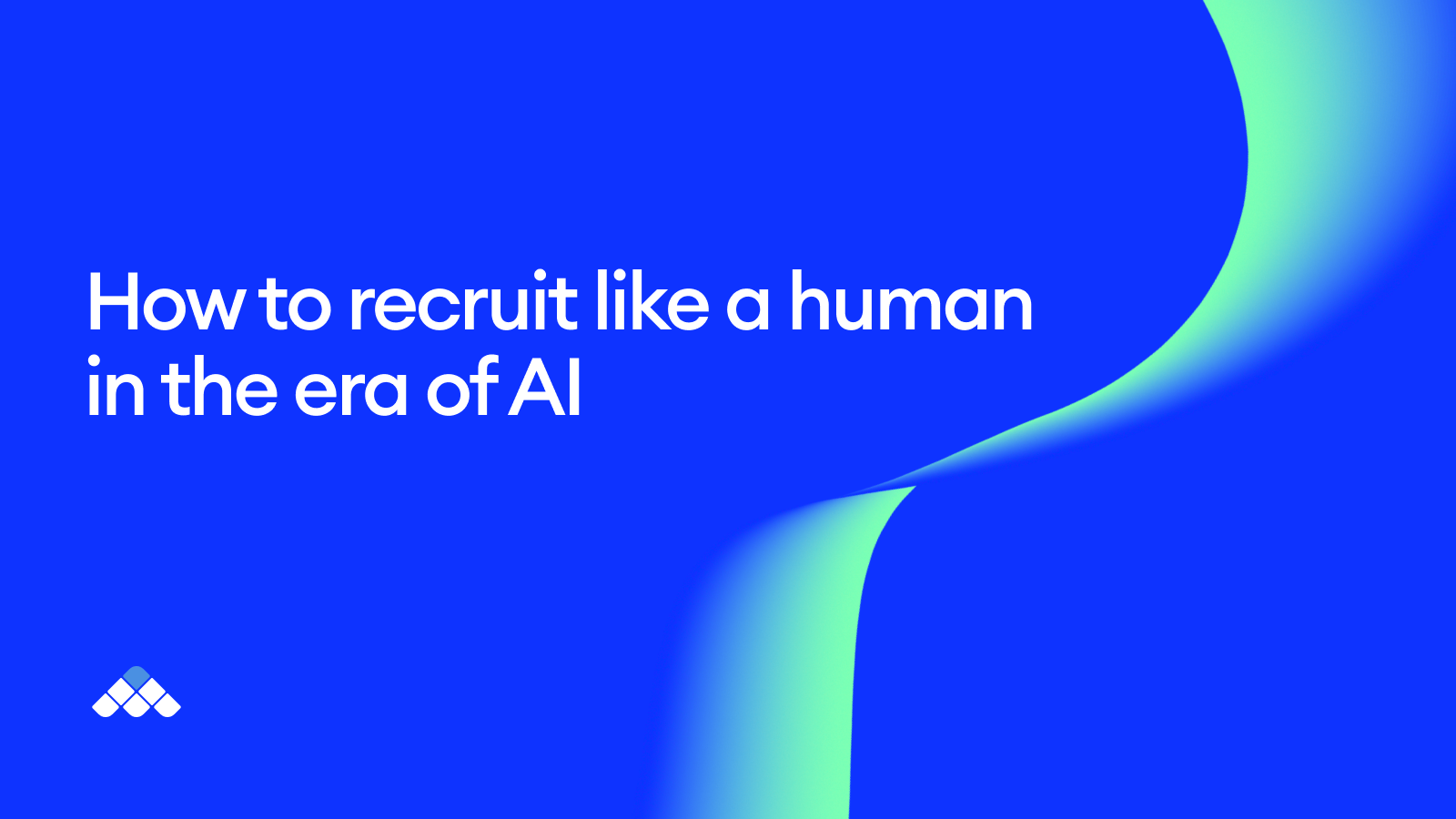Over the last 15 to 20 years, we’ve seen a proliferation of systems and tools that allow us to treat candidates as a commodity. But when I started my career in recruiting in 1998, it took the better part of 2 weeks to create a slate of as few as 5 candidates; what that meant was you spent a lot of time building trust and getting to know your candidates. Fast forward to today, and you can push a button and come up with 100 qualified names.
While scaling companies like Facebook from 500 to 6,000 people, Dropbox from 500 to 1,200, and Robinhood from under 400 to 4,400, I learned that it’s essential not to lose sight of the relationship-centric approach that defined my early career. In my experience, the key to recruiting world-class teams is bringing logic and analytical rigor to a process rooted in relationships.
With AI poised to impact nearly all parts of hiring, today’s most strategic recruiting leaders need to understand how to maintain the central importance of relationships while selectively leveraging technology to augment—not replace—the human aspects of hiring. Here’s my checklist for how to do just that.
Establish the importance of relationship-based recruiting
Relationship-based recruiting starts with arming your staff with enough time and space to be able to build a trusting relationship that’s mutually beneficial: meaning it’s beneficial to the company to bring in a highly-qualified individual and it’s beneficial to the candidate to offer a rewarding career path that aligns with their goals. That means freeing recruiting teams from rote tasks and giving them the time and support to build relationships through trust.
Operationalize a human-centric process
In order to champion a relationship-based approach to recruiting, you need to operationalize the notion of ‘how do we treat this candidate the way we want to be treated?’. Do we want boilerplate interview prep or something more personalized? Do we want to customize our process based on the candidate’s depth of experience? Allowing for that more bespoke approach requires tools, systems, and policies to make it a reality.
Metaview is a great example of an AI-based tool that helps enable a relationship-based approach. By automating the interview note taking process, it uses AI to allow both the interviewer and the candidate to perform at their best. It gives recruiters the opportunity to show up as humans, not as note-taking machines. In turn, this helps candidates to feel like the interviewer is focused on them, giving them the comfort to give their best performance.
Train recruiting teams on how to build relationships
Giving teams the systems and tools to enable relationship-based recruiting is one thing, but you also have to invest time in training them on how to build trust and rapport with candidates. Enable your teams to think about recruiting not as a tactical or operational task, but as a strategic one. Sales teams are a great model for this: they are decades ahead in terms of training teams to understand how to leverage the development of long-term relationships to enable business success. I encourage recruiting teams to take a page out of this playbook.
Measure what’s going on in your hiring process
Instrument your pipeline to show the impact of relationship-based recruiting. I recommend sending an NPS survey to all candidates (not just successful ones!) that asks whether or not they see your company as an employer of choice after going through your interview process. It’s particularly valuable to see what those who didn’t get an offer or who didn’t accept an offer have to say. That’s where you can find out where there’s real opportunity to improve. You’ll understand quite quickly whether you have a tactical, cold TA process or one that’s human and treats the candidate with respect. In addition to gaining valuable insight, you’ll be able to demonstrate the impact a human process has on desired outcomes.
Become a strategic advisor to hiring managers
Master your craft as a TA professional that deeply understands a particular area. This will enable you to become a strategic advisor to hiring managers. You can give educated opinions on where new sources of talent can come from in the market, and help move hiring teams away from the same biased pipelines that result in the same biased outcomes. I experienced this in my own career by leveraging my engineering degree to become a trusted friend and advisor to engineers as a recruiting leader.
Demonstrate the impact of quality over quantity
Though it can be tempting to leverage automation to build a high-volume candidate pipeline, you can actually achieve much better results when humans take the time to carefully source great people. What you’ll find is better throughput: it takes fewer candidates to get through to a successful offer. While it might look like less volume at the top end, it’s actually more efficient. You’ll also produce candidates that are much more bought in to the company. While you won’t be able to convince stakeholders of the merit of this approach overnight, instrument your pipeline to get the data that proves this approach wins in the long-run.
Leverage AI to enable relationship-based recruiting at scale
Where I see the most potential for AI in recruiting is by enabling relationship-based recruiting at scale. Some of the best hires of my career have been relationships I nurtured over the course of years. AI can be a great tool to help enable that type of interaction at scale, for example, by reminding you to check in with different people at certain intervals and collecting the context you need to maintain seamless relationships over time.
AI can also be a powerful tool in running great interviews at scale. In my own experience at Robinhood, I saw firsthand how Metaview helped us ensure we were conducting much more effective interviews, especially as we switched to fully remote. Metaview helped us to more than double our hiring output for engineering specifically by ensuring a consistently efficient and effective interviewing process.
Differentiate yourself by doing what a robot can’t
Look for creative opportunities to add value in a way that no machine could. Uncover who in your pipeline might be ready for the next step, or become a specialist in an upcoming area. It behooves you to go deep into a particular talent vertical. Who do you know in your network that has access to the best and brightest and how can you develop long-term relationships with them? Focusing on these high leverage, human activities will always ensure recruiters are providing differentiated value, no matter what tech advancements may come.


